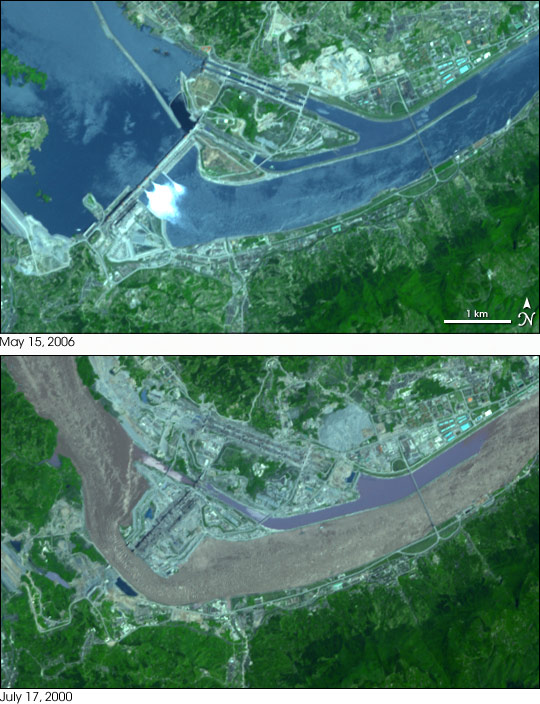To generate between 10 billion and 85 billion kilowatt hours annually (Parkyn, 110-114) a mega dam requires tremendous amounts of water to flow though its outlet valves each day to power its generators. For this to occur a reservoir is created behind the dam by partially or completely deconstructing diversion and outlet channels causing river water to accumulate behind the completed dam. If the outlet channels are completely deconstructed water flow is entirely absent downstream until the water levels in the reservoir reach the height of the outlet valves in the dam. Even if diversion channels still allow some water to escape the reservoir bed the amount of water flowing downstream is miniscule in comparison to natural levels of water flow. This temporary obstruction of water, especially during natural flooding cycles, has the potential of creating drought conditions downstream, therefore severely effecting animal and plant life past the dam.
The creation of massive reservoirs, which have the capability to reach 39.3 billion m3 (Parkyn, 114), drastically alters the landscape upstream from the dam (refer to Figure One) by flooding agricultural, forest, and other land ranges. This unnatural flooding consequently alters habitats upstream by killing any vegetation covered by the reservoir waters.

Figure On: Three Gorges Dam; Yiling, China; Before and After Images of Dam Construction.
This unnatural reservoir also has the ability of creating a stagnant watertable. The water from an unnatural water source can seep underground into the natural watertable, which may be beneficial for nearly arid watertables, but foreign water may overload the watertable. Overfilling a watertable results in decreased water flow, ultimately causing the underground water source to become stagnant. This loss of a water source effects surrounding flora populations as well as the water quality of surrounding well water (Woodward).